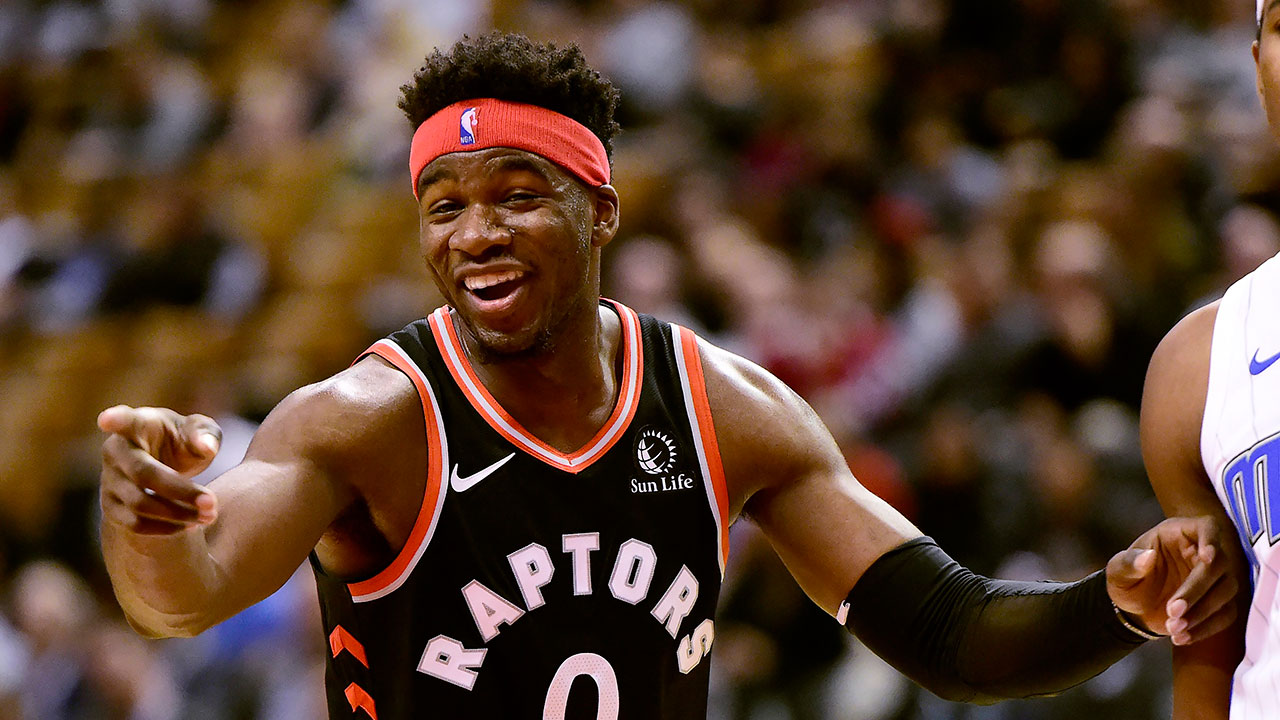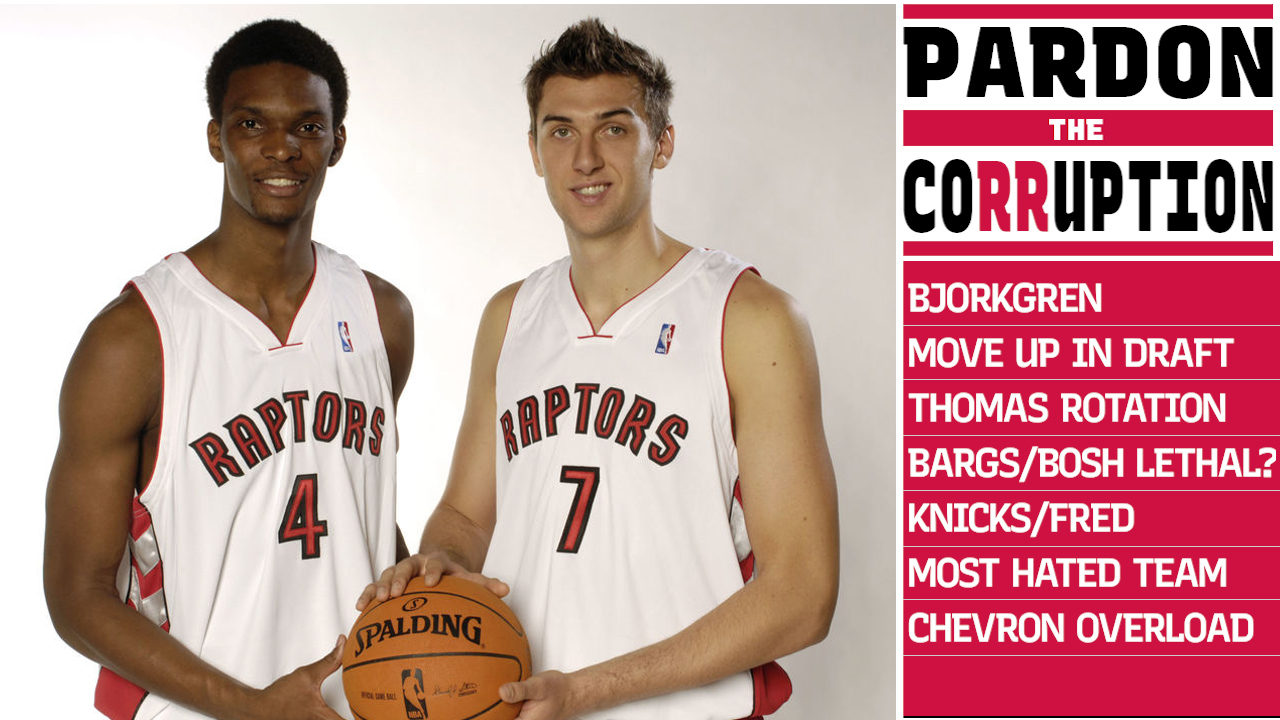If there is one sequence that defines Terence Davis II’s 2019-20 rookie season, it would be this one:
Davis, who is always moving and trying to get open, runs around the perimeter and receives a pass with just 10 seconds remaining on the shot clock with Kris Middleton defending him. Davis is not one to shy away from pressure, and he is creative getting to the basket, this time using an in-and-out dribble that Middleton bites on, allowing Davis to drive by him and draw the foul on his way to the basket. It’s this type of pressure that Davis puts on the rim which makes him such a useful tool in the Toronto Raptors’ offense.
Unfortunately, just 28 seconds later in a tight fourth quarter, Davis picks up an unnecessary foul on George Hill after going for the steal 75 feet from his own basket.
This, in a nutshell, is Terrence Davis II. It’s the reason so many Raptors fans are infatuated with his unique skill set and the reason Raptors’ head coach Nick Nurse doesn’t feel comfortable playing Davis in high-leverage situations. It’s the reason Davis was the only Raptor to play in all 72 regular-season games and make the NBA All-Rookie Second-Team and play less than 30 minutes total in the Boston Celtics series.
Davis’ game is unapologetically aggressive, which made him extremely exciting to watch this season and going forward. Davis is always on the move and always looking to score, and he averaged 7.5/3.3/1.6 in 16.8 minutes per game with an impressive 58.8 true shooting percentage, partly because 55.7 percent of his field-goal attempts came from three, a measure that indicates he bought in on the offensive end.
Offensively, Davis surpassed all expectations that he entered with as an undrafted point guard coming out of Ole Miss. At 6-foot-4, 201 pounds, Davis is a walking mismatch at either guard position despite only being 23-years-old, and he consistently uses his strength and athleticism to his advantage.
Davis gets to the rim at will, something very few Raptors are capable of, and he shot an impressive 60.0 percent within 10 feet of the basket. He is similar to Norman Powell in that he is so athletic he can turn the corner and attack the basket before the defense sees it coming, such as this dribble hand-off that he makes look easy:
He is also an elite rebounder for his position and loves to get out in transition before the defense is set, often using nifty finishes around the basket to draw a foul or score.
Plus, Davis consistently takes advantage of defenders caught ball-watching with effortless back-door cuts.
In terms of playmaking, Davis has a lot of room to grow, but he showed promise as a pick-and-roll ball-handler, consistently finding Serge Ibaka and Chris Boucher on their run to the rim. Unfortunately, Davis too often has tunnel vision looking for his own basket. This can result in bad shot selection or, worse still, offensive fouls and turnovers. It’s not surprising that Davis’ assist percentage (14.2) was the same as his turnover percentage (14.1).
The most impactful part of Davis’ rookie season was his three-point shooting. Davis shot 38.8 percent from three on 3.4 three-point attempts per game in the regular season. But when we talk about shot selection, it’s worth noting that Davis shot 42.0 percent from three in catch-and-shoot scenarios and just 13.5 percent off the dribble.
If I am going to analyze Davis’ season objectively, though, I have to point out that he struggled significantly on the defensive end of the floor throughout the season and into the playoffs, never earning the trust of his head coach. It’s the primary reason Nurse didn’t play him against the Celtics, despite the Raptors desperately needing offense.
Davis loves to score, and when you watch him attack the basket with his rare combination of size and speed, it’s easy to see why he prioritizes that part of his game. But Nick Nurse and the Raptors are a defense-first team, so Davis needs to buy in on that side of the ball if he is going to be a bigger part of the Raptors rotation next season, especially in the playoffs when every possession matters and execution is so important.
It’s not just that Davis picks up unnecessary fouls — almost every rookie does that. It’s also that Davis lacks fundamentals, such as his footwork and IQ defending the pick-and-roll, an important skill for any guard in the league.
Here, for example, Davis struggles to get his top foot around a screen set by Paul Millsap, which allows Monte Morris to get a step on him, forcing Rondae Hollis-Jefferson to help contain the drive, leading to an open three. Davis is fast enough to contain that dribble, but his footwork needs to be better getting around the screen.
Here, again defending the pick-and-roll, Boucher switches onto Davis’ man, which is a very big part of the Raptors defensive scheme and something ever Raptor needs to be comfortable doing, but Davis takes far too long to recognize the switch and recover to Mike Scott, allowing Scott to blow by him and draw the and-one.
It’s plays like these, along with the unnecessary fouls and ball-watching Davis is often guilty of, that makes it hard for Nurse to play him in high-leverage situations, especially considering the Raptors defensive schemes are complicated and require a high level of IQ. But the Raptors will need Davis going forward because he is one of the few finishers on their team who, along with his floor-spacing, can attack the basket and punish teams in the midrange.
To be fair to Davis, what the Raptors were running on the defensive end last season was ridiculously complex. It’s not easy to play such complicated schemes night after night, switching between zones to man and hedges to switching, so it’s no wonder the only rookie in the Raptors rotation struggled on that side of the ball.
Nurse asks a lot from his players and is always switching up the defensive coverages, not just game to game but within each game. Plus, it’s not just that Davis needs to know the schemes: He also needs to know the tendencies of opposing players in order to better defend them.
Davis will get better on the defensive end of the floor as long as he buys in, especially considering he has mentors in Lowry and Fred VanVleet, two of the best guard-defenders in the NBA. The longer he is in the league, the more he will know opposing players’ tendencies, but it is really up to him to decide how much he wants to buy in on that side of the ball. He needs to understand why Matt Thomas played more minutes than him in the Celtics series and he needs to take it personally if he is going to become a better defender and therefore a playoff threat.
Davis is an extremely exciting prospect, defensive liabilities be damned. He is best suited in an off-ball role beside a point guard like Lowry or VanVleet, similar to how Powell has been deployed as a Raptor. His usage of 19.0 percent is likely to go up next season, especially if the Raptors move on from Powell, which they have the ability to do given that Davis replicates so much of what he does. But if Davis doesn’t want to fall into the same camp that Powell did, he needs to show consistency on both sides of the floor.
The Raptors should be really happy with what they have in Davis, as should all Raptors fans. He’s is already a polished offensive weapon with the potential — and all the tools — to become a great two-way guard. It’s up to him to fulfill his potential.



